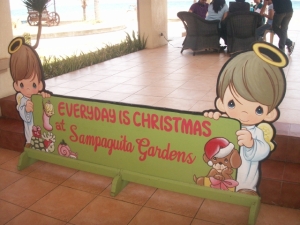This past weekend I went with four coworkers and a lecturer at Ateneo University Business School to a province called Aklan. I woke up at 5:00 AM Friday morning in order to catch the ferry to Iloilo at 8:00. We drove five and a half hours north to Kalibo, where we stayed in Sampiguita Resort, “where it’s Christmas everyday.” It is the vision of Sam Butcher, the American founder and creative genius behind the Precious Moments dolls – a collectible item so sweet it will make your teeth rot.
Tag Archives: poverty mapping
Who is Poor? Defining Poverty
This was written for the Kiva Fellows blog. Read the original here.
 How do you define poverty? A basic needs index looks at whether (and to what extent) fundamental needs are fulfilled – food, water, shelter, clothing – and whether people have access to critical services – education, information (newspapers, etc.), sanitation facilities, healthcare, financial services. This is an absolute poverty calculation, which uses a standard threshold that can be compared across countries and continents. Another method is to use a national poverty line, usually a percentage of median income. For example, if the median income is $10,000 USD, and the poverty line is 60% of that, any family making below $6,000 is technically below the poverty line. This is a relative poverty calculation, because it is country-specific. Using this method, it doesn’t make sense to compare across countries, since the poverty line in wealthier countries with higher median incomes will allow for greater purchasing power than in much poorer countries. In microfinance (and development in general), you often hear about the percentage of the population that lives on less than $1/day – the definition of extreme poverty – or $2/day, or some other defining statistic of poverty.
How do you define poverty? A basic needs index looks at whether (and to what extent) fundamental needs are fulfilled – food, water, shelter, clothing – and whether people have access to critical services – education, information (newspapers, etc.), sanitation facilities, healthcare, financial services. This is an absolute poverty calculation, which uses a standard threshold that can be compared across countries and continents. Another method is to use a national poverty line, usually a percentage of median income. For example, if the median income is $10,000 USD, and the poverty line is 60% of that, any family making below $6,000 is technically below the poverty line. This is a relative poverty calculation, because it is country-specific. Using this method, it doesn’t make sense to compare across countries, since the poverty line in wealthier countries with higher median incomes will allow for greater purchasing power than in much poorer countries. In microfinance (and development in general), you often hear about the percentage of the population that lives on less than $1/day – the definition of extreme poverty – or $2/day, or some other defining statistic of poverty.
Statistics are important for microfinance institutions (MFIs). When you know what you are dealing with, you can more effectively target the population with programs that are proven to work. It is important for an MFI to understand its clients and where they exist on the spectrum of poverty. This is actually more difficult to assess than you’d think. It is not feasible to ask clients how many dollars a day they spend, or even try to determine their income relative to the rest of the population. Instead, MFIs use social performance metrics – simple tools to help them to define exactly what they are as an organization and whom they are serving. They are basically proxies, which, when examined in aggregate, give the MFIs a profile of the poverty level of their clients.
